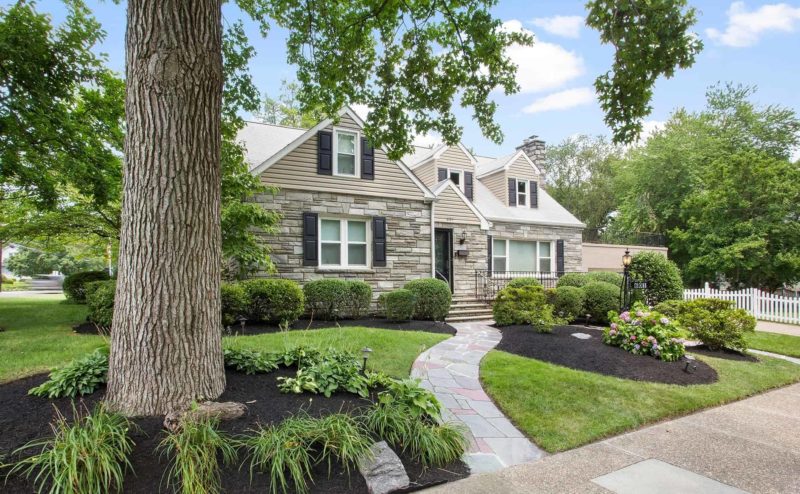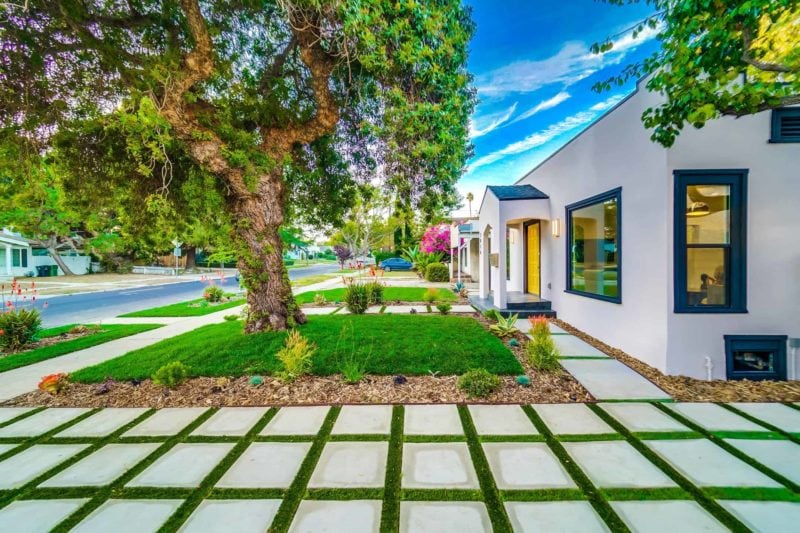Landscaping Trees: Choosing the Best Plants for Your Yard
Landscaping provides the opportunity to accentuate the beauty of your home, while also delivering several other benefits. Choosing the right tree typically involves thinking about the reasons behind your decision to include trees in your backyard design. It’s also important to consider the environmental aspects of your outdoor area while complimenting the existing size, color and shape of your home.

Choosing the Right Landscaping Trees
A lot of factors go into the process of choosing the perfect tree for your yard. Not only must you consider the reason behind your purchase but you must also research the type of environment your landscaping trees are going to require for healthy growth. Evergreen shrubs and trees maintain their lush green foliage throughout the year, delivering a constant touch of color to your landscaping design. Deciduous shrubs and trees lose their foliage seasonally, creating a less colorful backyard design throughout the cooler months.
Determining Your Tree’s Purpose
Healthy landscaping trees have intrinsic value that goes well beyond simply looking nice. Depending on the type of tree you plant, you may be able to:
- Enhance the beauty of your yard
- Filter out pollutants
- Reduce noise
- Shield your home from wind
- Shade your home from the sun
- Create shady outdoor areas
- Block unpleasant views
- Increase the market value of your property
- Reduce glare from surrounding structures
- Minimize precipitation runoff
Selecting a Tree Size and Shape
Choosing a tree with the optimal shape and size for its desired location enhances the value it offers. For example, short trees with low-lying branches are ideal for areas with overhead power lines, while taller landscaping trees create excellent privacy dividers. The width of a landscaping tree’s branches determines how much shade it can provide, but also limits its placement in your outdoor design, particularly if you have a small or narrow yard.
In general, mature landscaping trees with long lifespans provide greater value over younger trees with less potential. Trees offering longer lifespans tend to grow more slowly, while varieties with shorter lifespans grow quickly. If your landscaping needs are time-sensitive, choosing fast growers is the best option. You simply need to realize that the trees may need replacing at some point in the distant future.
In addition to keeping in mind how quickly you need the tree to grow, you may want to consider its size at maturity before choosing its role in your landscape design.
- Shorter landscaping trees are going to accentuate the beauty of your home without overshadowing its size.
- Taller landscaping trees often add more value to the property by enhancing privacy without infringing on the home’s access to sunshine.
Choosing the Best Planting Site for Your Tree
It’s important to look into the soil and sun requirements of any trees you intend to plant. For example, the Western hackberry may be suitable for dryer climates such as Albuquerque. Site conditions are critical for the health and growth of your trees, enhancing both beauty and longevity, while also minimizing maintenance needs. A local arborist can assist you in selecting a spot to plant your tree where it is going to thrive.
You should consider each of these aspects during your selection of a tree:
- Hardiness zone
- Soil conditions
- Drainage conditions
- Sun exposure
- Wind exposure
- Space restrictions – below and above surface level
- The possibility of pest infestation
Understanding Ideal Characteristics in a Tree
Even if you aren’t an arborist, you can still buy excellent landscaping trees to meet your intended goals. Look for the following characteristics when purchasing your tree to enhance the likelihood of successful growth:
- Strong trunk
- Firmly attached branches originating from separate points on the tree
- A balanced spacing of branches
- Lack of intertwined growth
- Strong root system encased in an appropriately sized container or root ball
- Absence of disease and/or damage
Considering Qualities Offered by Landscaping Trees
Choosing the right tree for your yard involves more than simply finding a healthy tree that looks as though it can provide the service you want. Some landscaping trees may prove to be more work than they are worth. For example, some trees drop nuts, seeds, fruit, blossoms and twigs that you have to contend with to keep your yard neatly landscaped. It’s important to keep this in mind before you actually bring a tree home. Here are some examples to consider:
- Ornamental trees deliver messy clean-up along with lots of colors.
- Shade trees often outgrow their original placement.
- Conifers provide steady growth along with year-round greenery.

Embracing Feng Shui Tips for Trees
Incorporating the beliefs of feng shui into landscaping efforts is a popular trend, particularly with individuals who appreciate the ability to influence the flow of energy around them. You can easily do so as long as you put some thought into your tree placement before planting.
- Trees placed behind your home offer strong support, allowing you to manage essential aspects of your life.
- Several trees should be planted along both sides of the house to maintain a harmonious atmosphere within the home.
- Block negative energy by planting a row of trees in front of its source.
- Avoid planting in the yard’s center to sidestep financial stressors.
- Never allow trees to touch the house to avoid negative (yin) energy.
- Remove dead growth immediately to minimize the risk of drawing energy from the home.
Many feng shui experts recommend planting tree species based on specific sides of the yard to maximize benefits. Depending on your desired tree’s purpose, you may want to also consider feng shui energy when selecting your tree placement.
Here are a few examples of suggested directions for different energy benefits:
| Type of Tree | Suggested Side of the Yard | Feng Shui Benefit |
|---|---|---|
| Pine Trees | Eastern | Longevity for members of the home |
| Lime and Orange Trees | Southeastern | Financial wealth and success |
| Peach Trees | Western | Growth in personal relationships |
| Apple and Pomegranate Trees | Southwestern | Love and happiness |
It is important to consider your purchase of a tree carefully, particularly because many varieties of landscaping trees can outlive the people who plant them. Your decision is likely to bring permanent consequences, including long-term maintenance costs and/or unpleasant results if you choose unwisely. On the other hand, selecting the right tree for your yard can provide years of happiness with positive results.
This article originally appeared on the Redfin website and was written by Angie Bersin on March 6, 2019.
